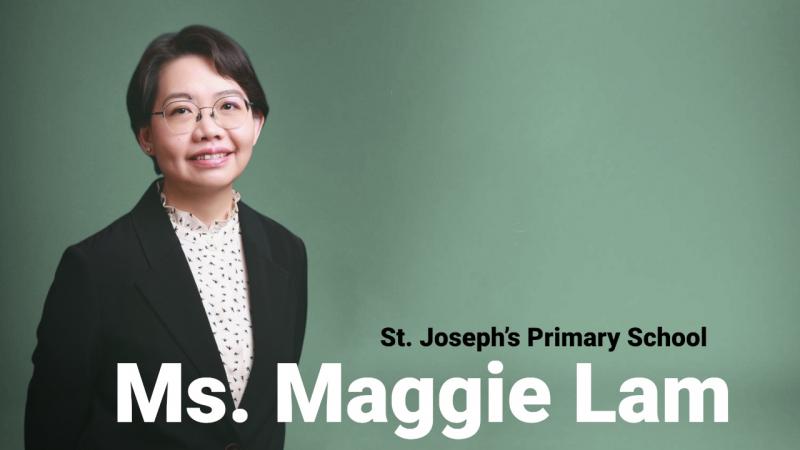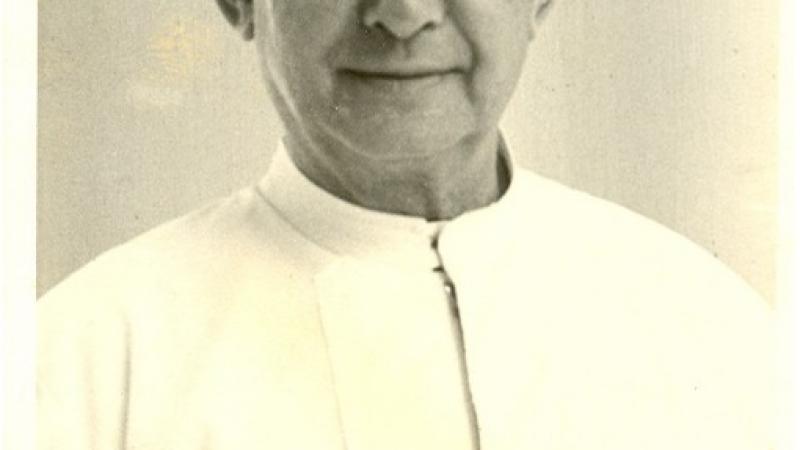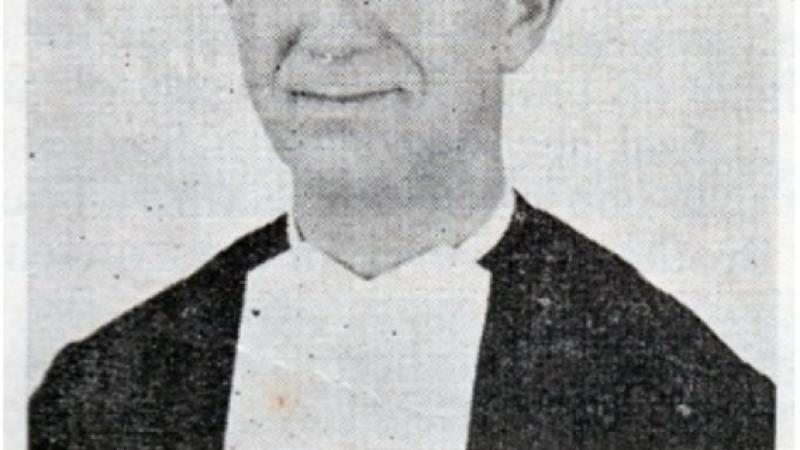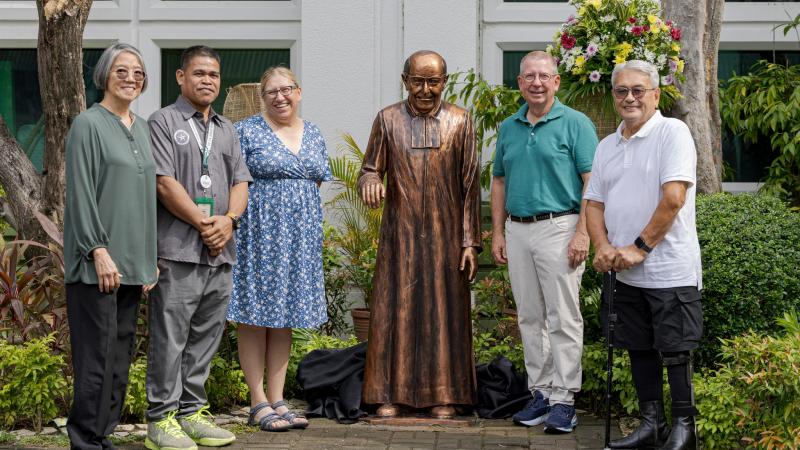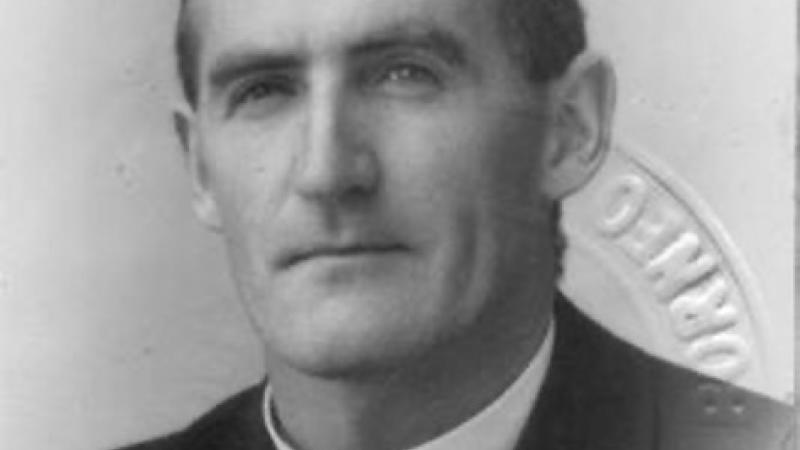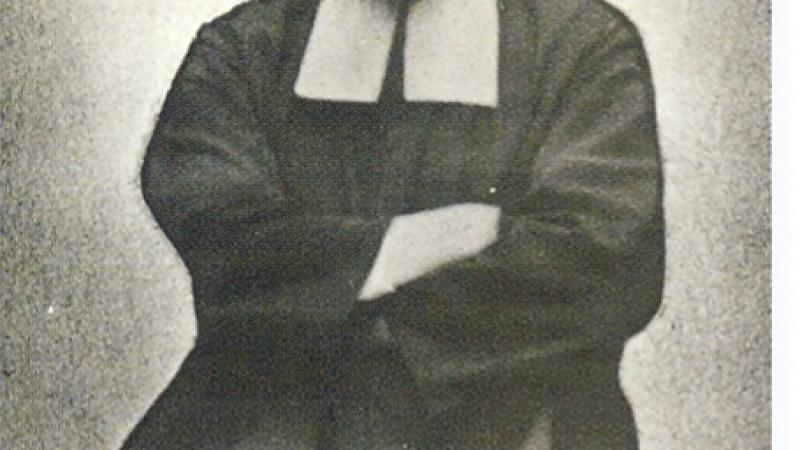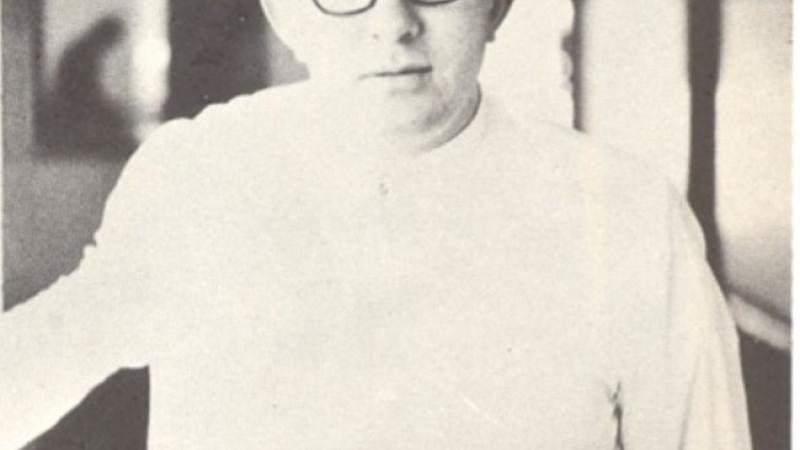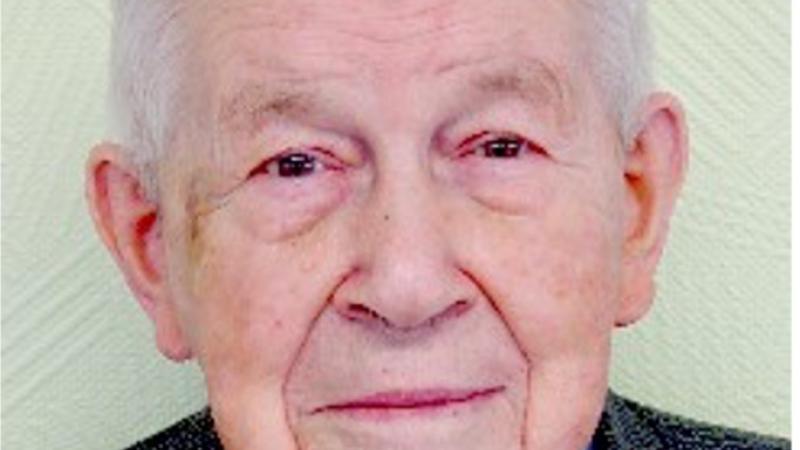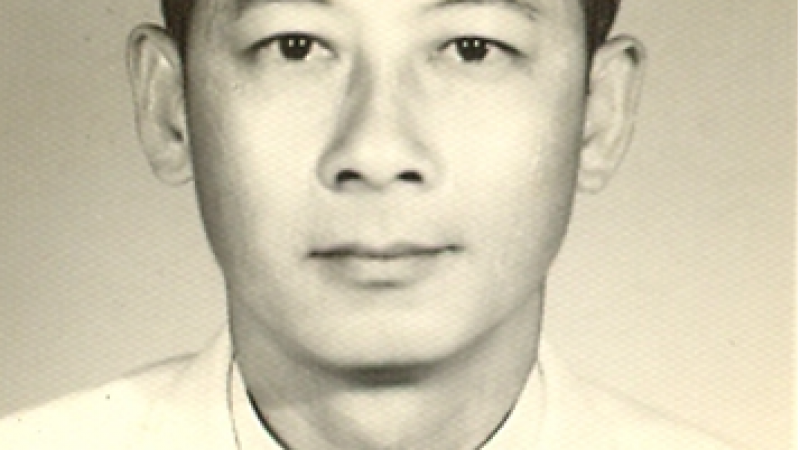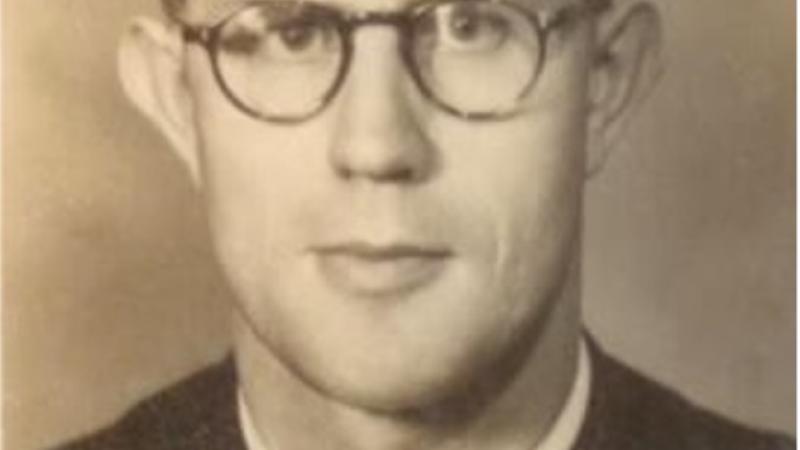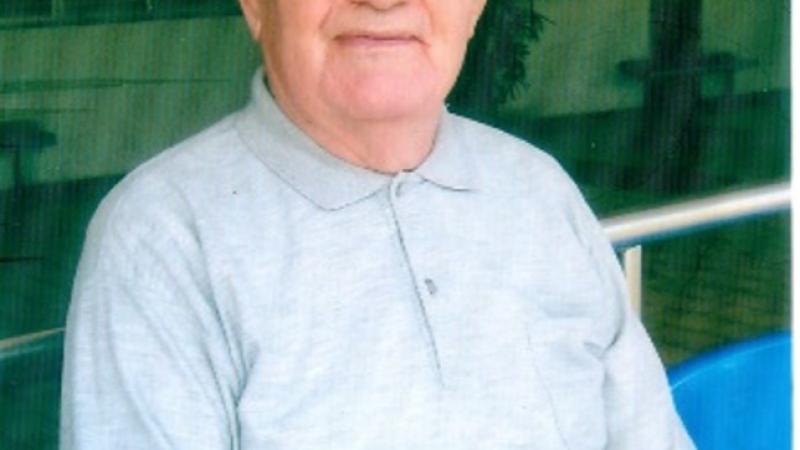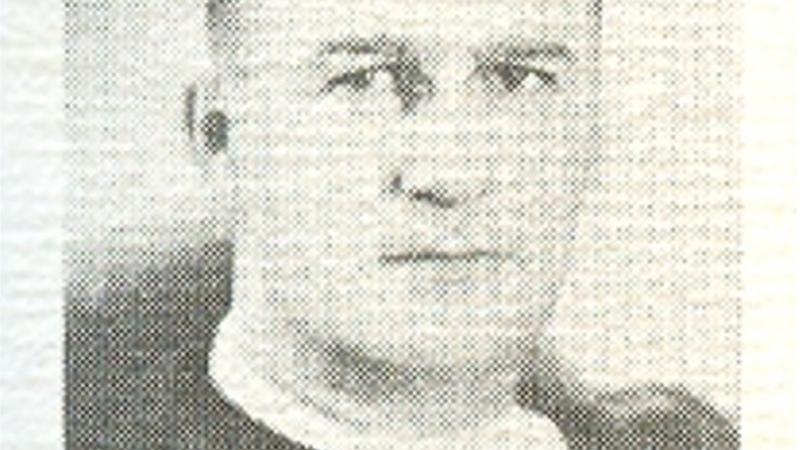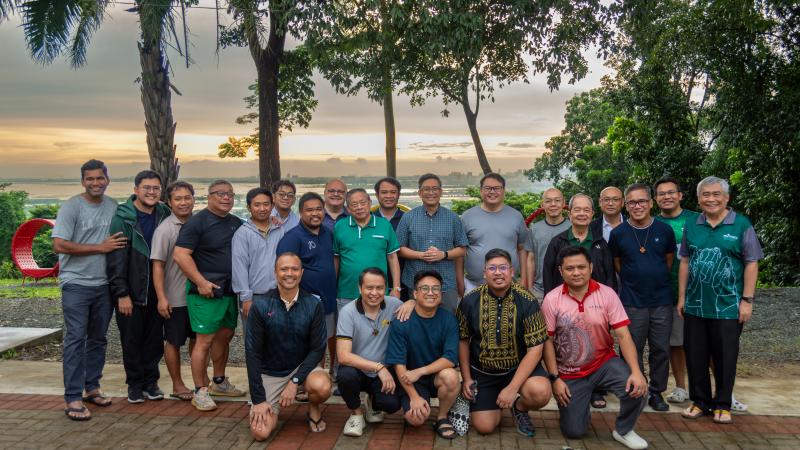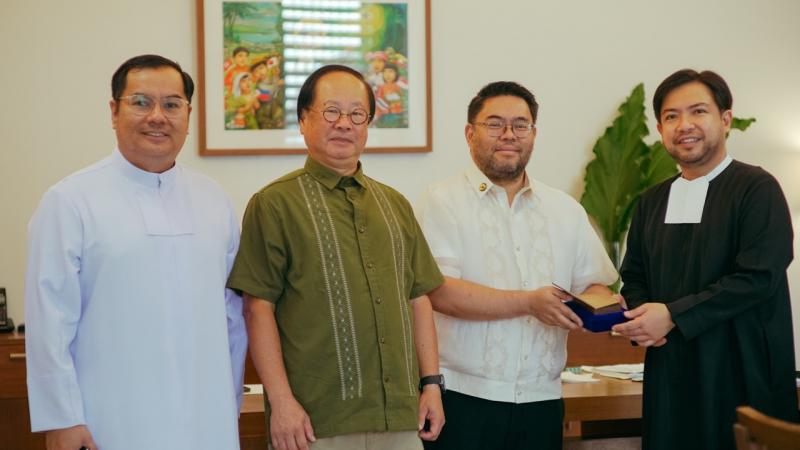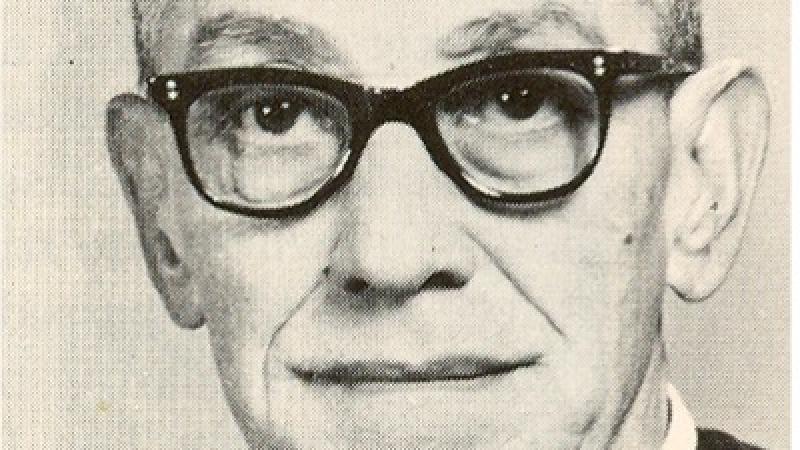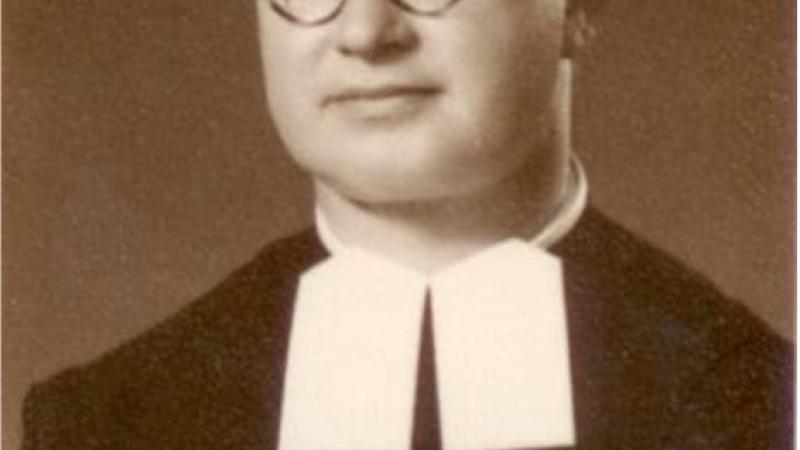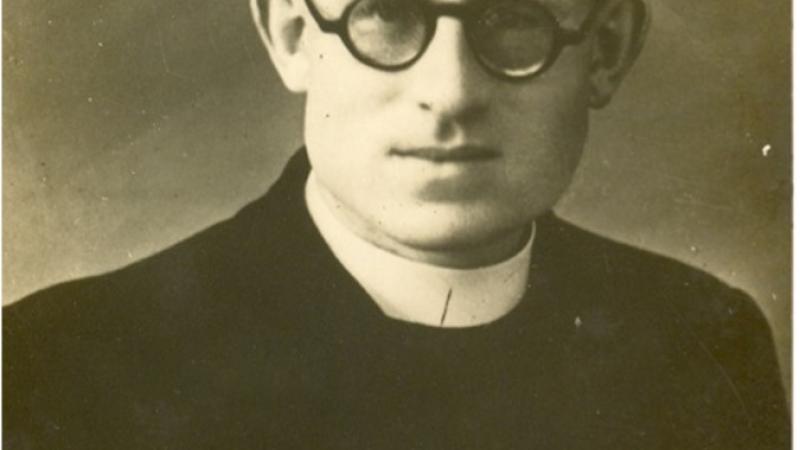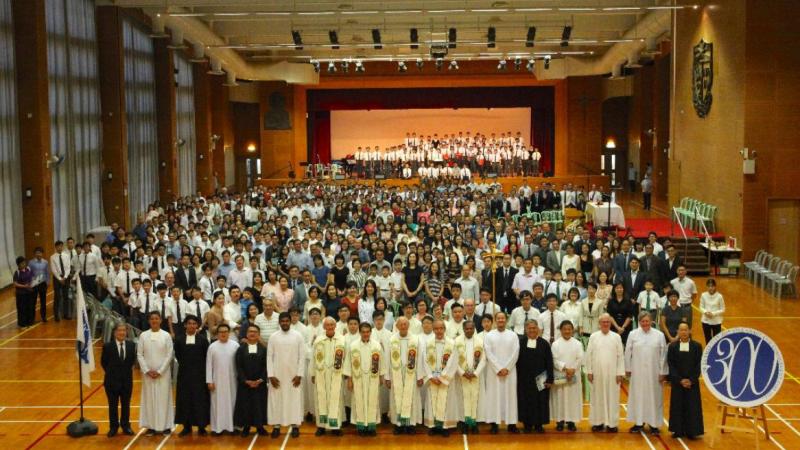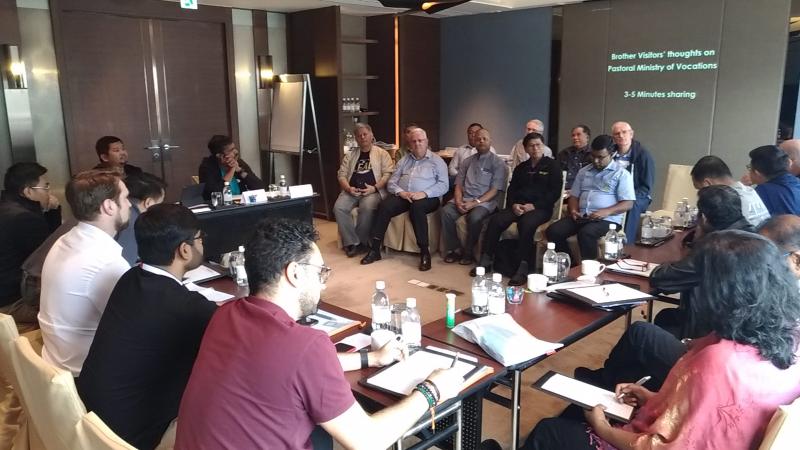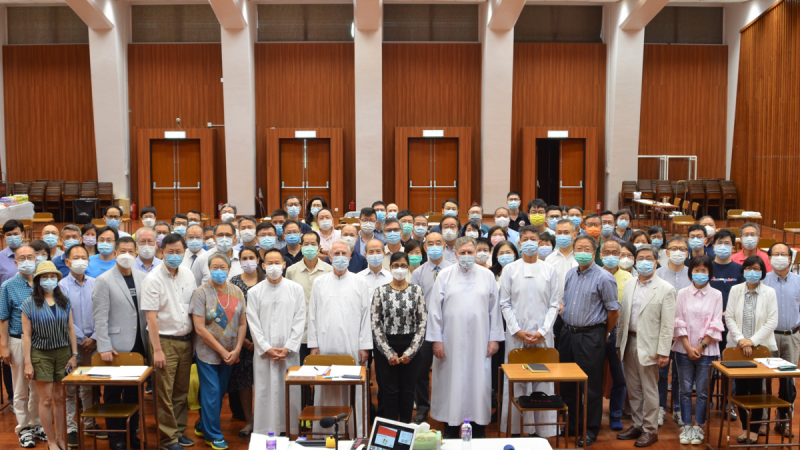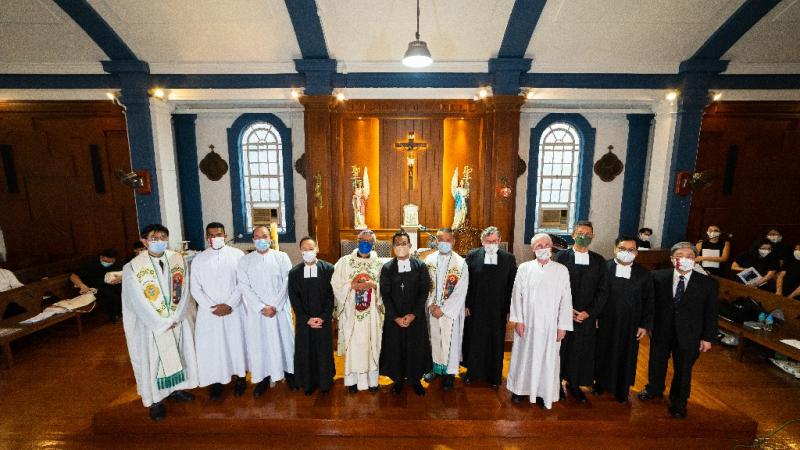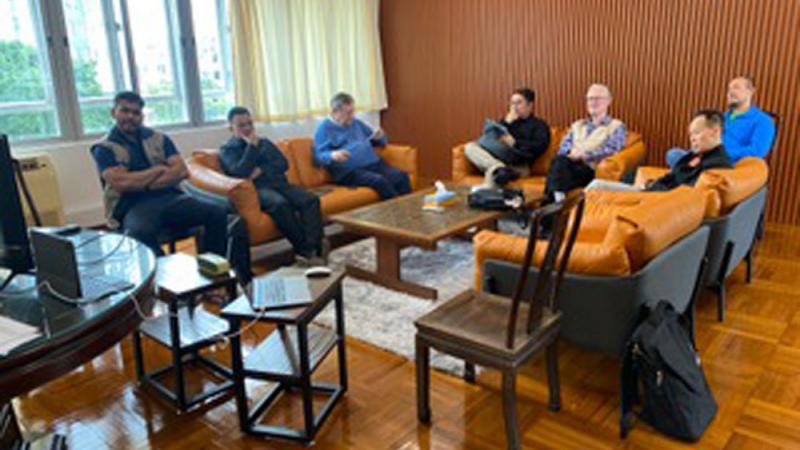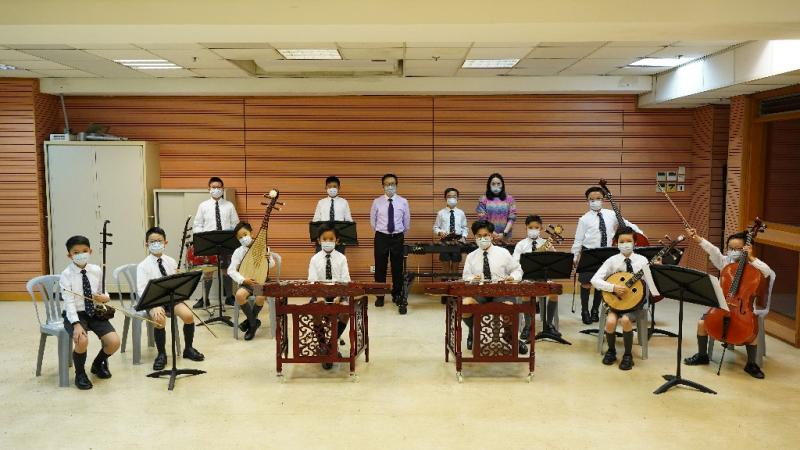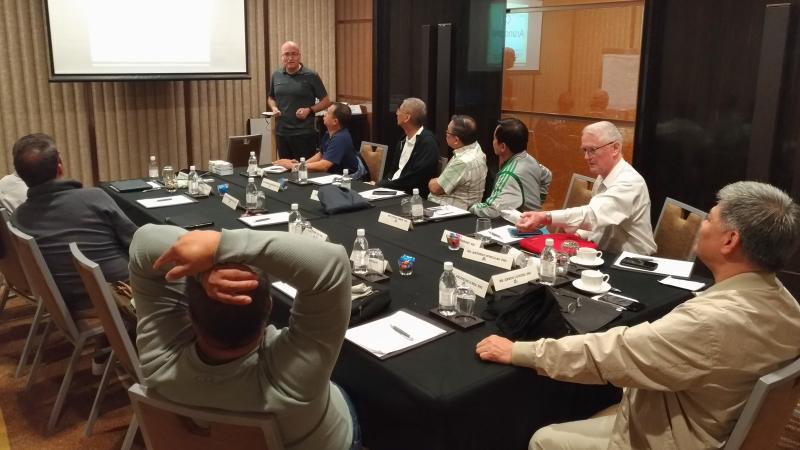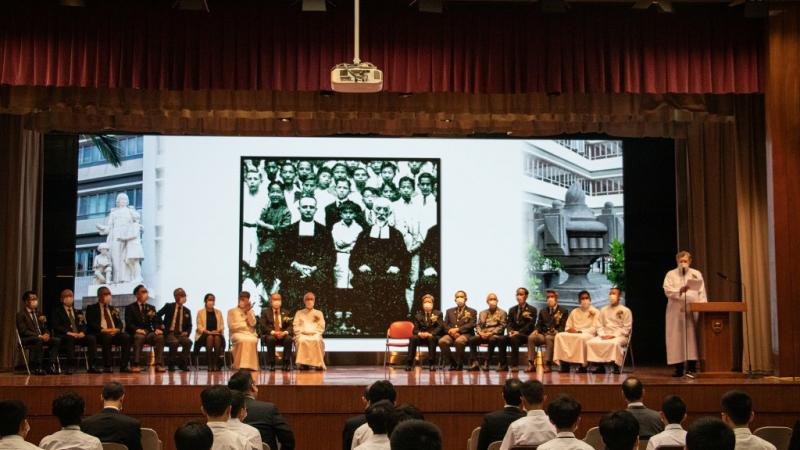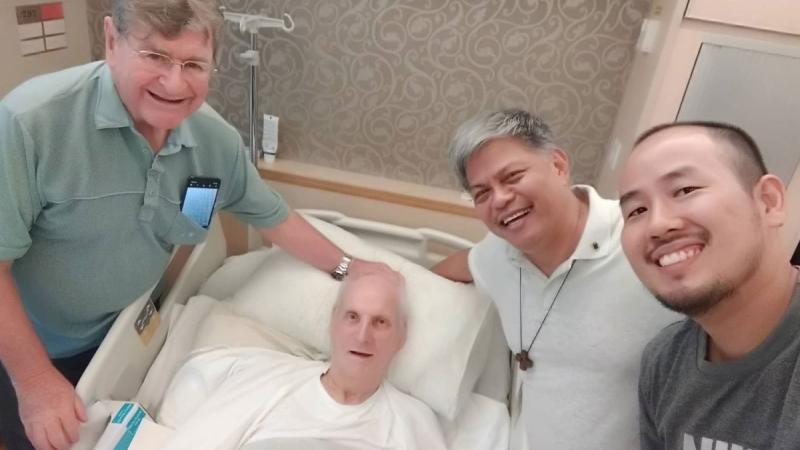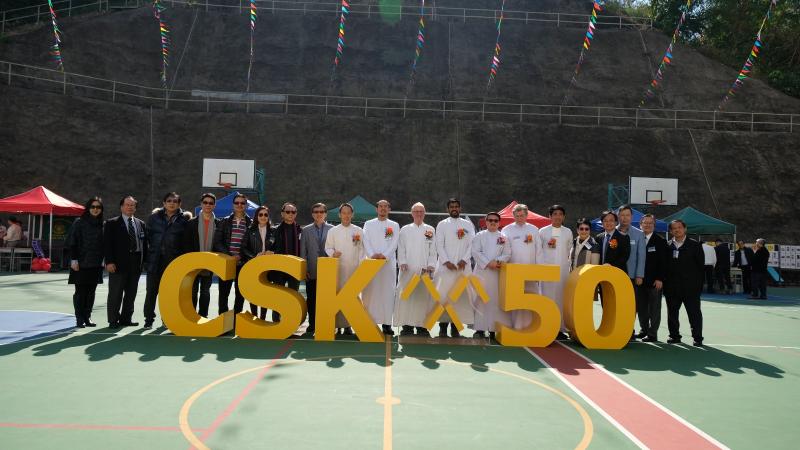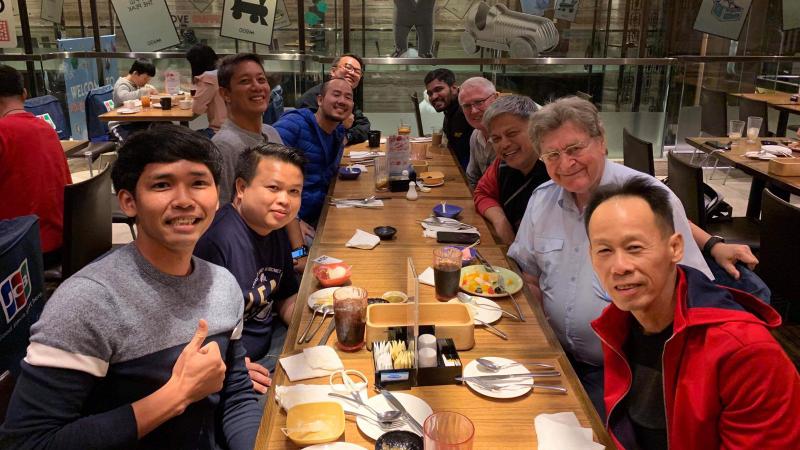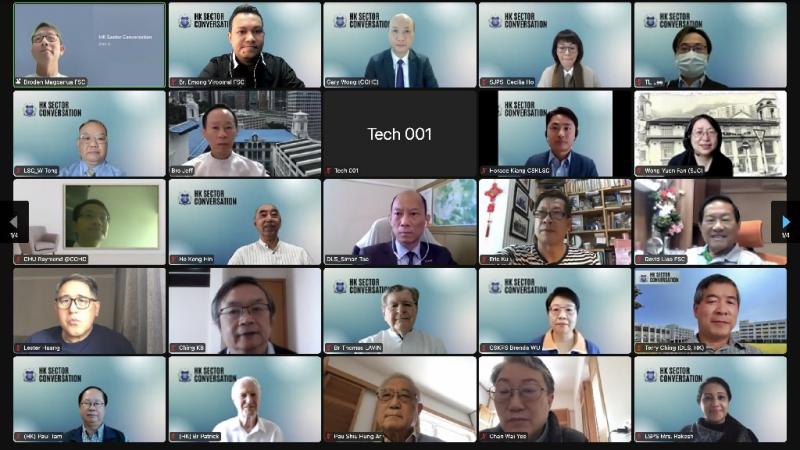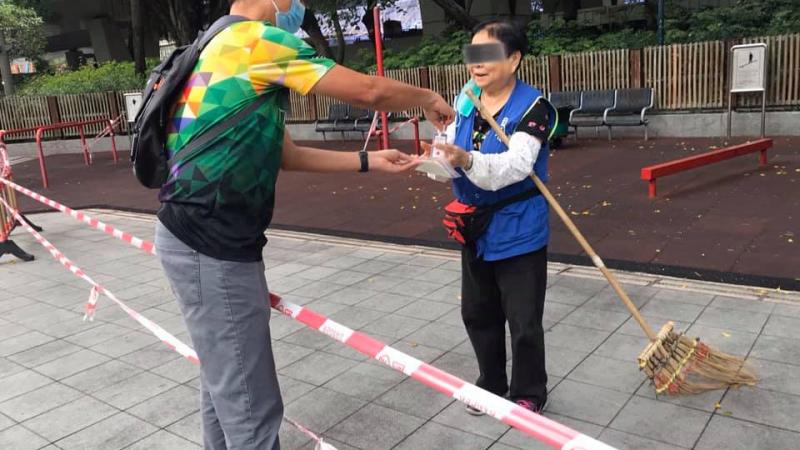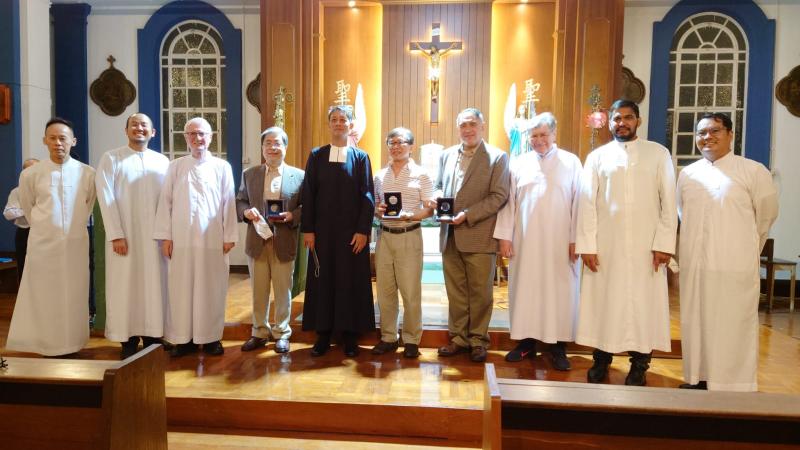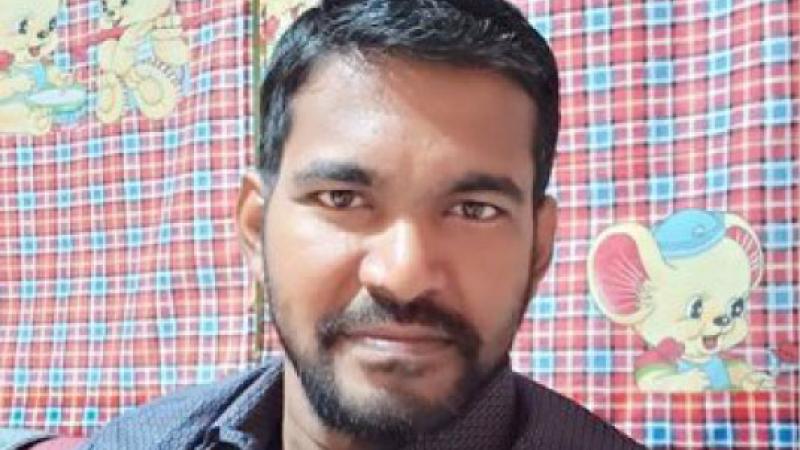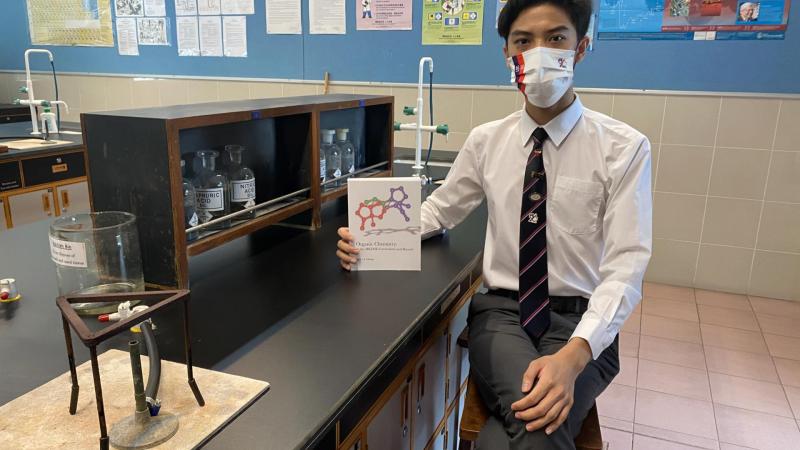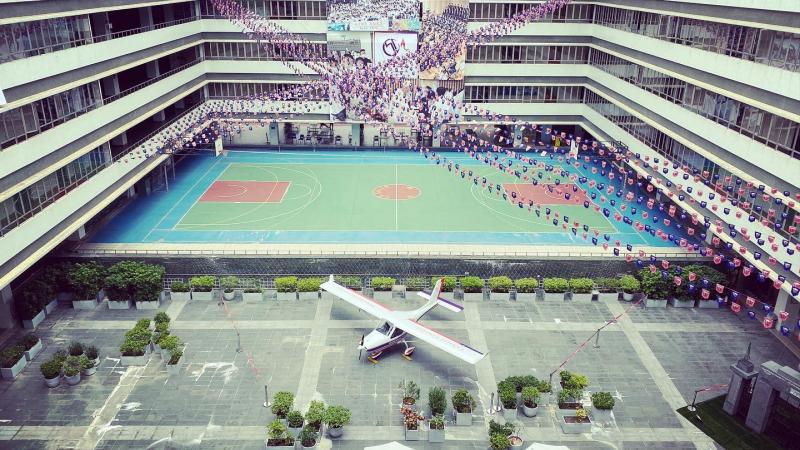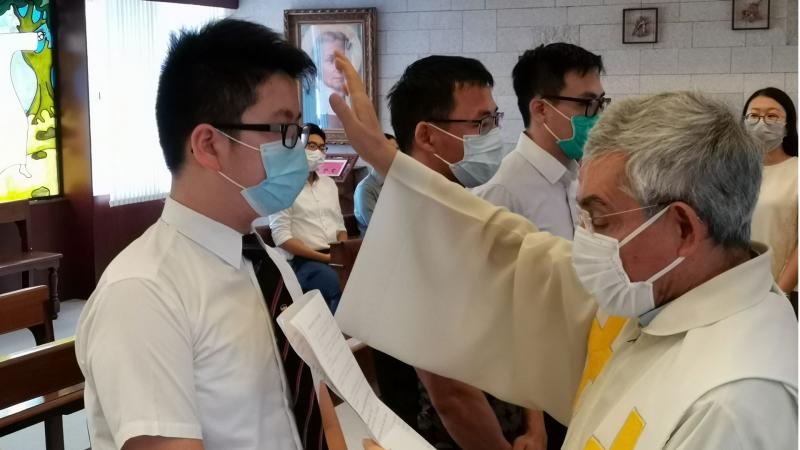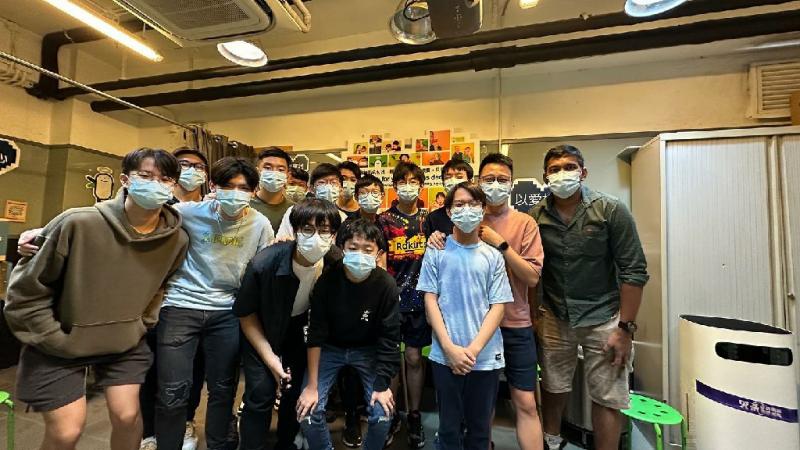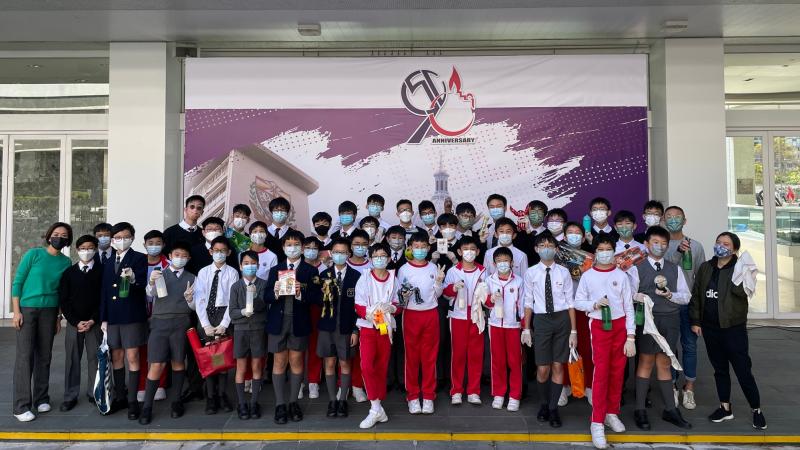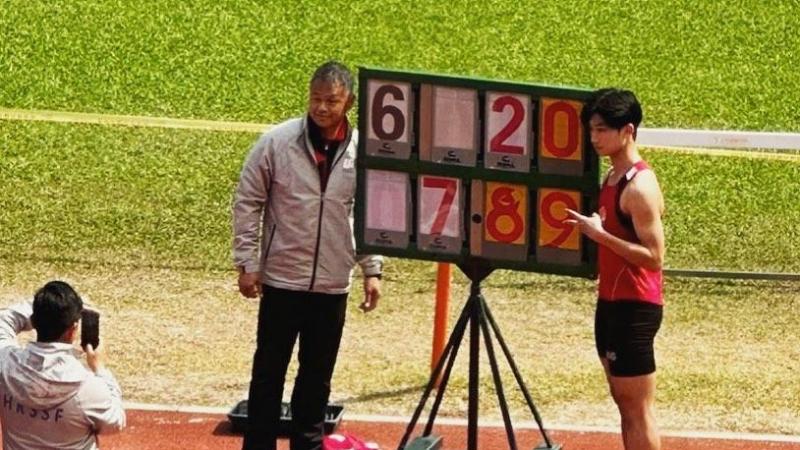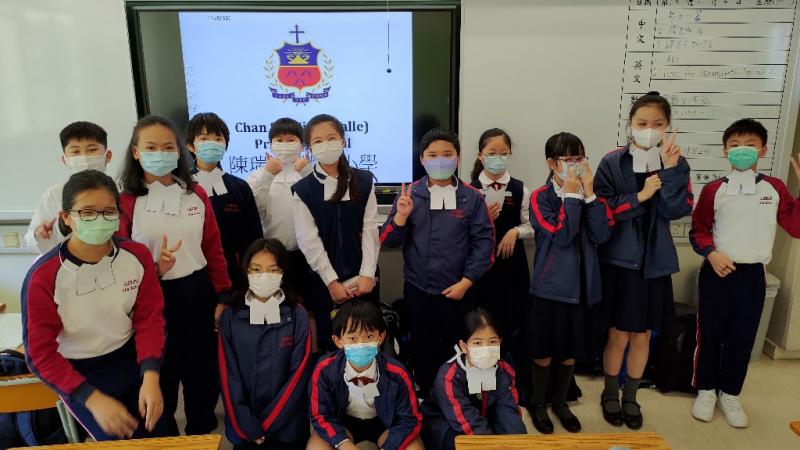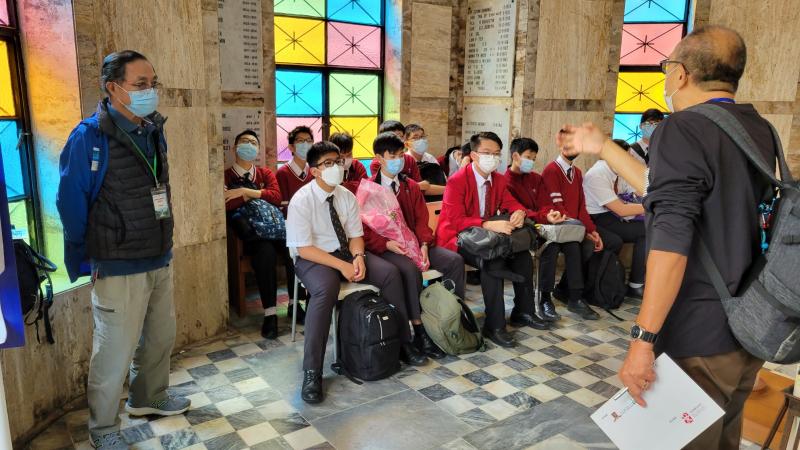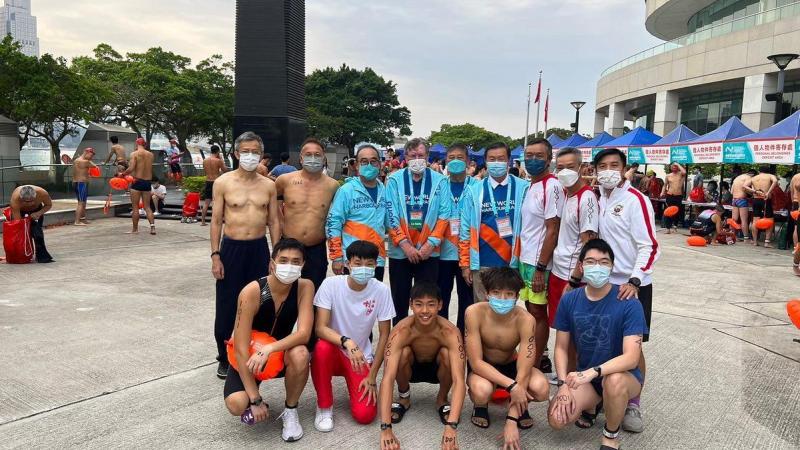
Originally published in The Gateway Issue No. 27 (December 2010)
In the 1920’s, a number of young German Brothers were sent on the missions to the Far East, to Ceylon, Burma, Manila, Hong Kong, Penang and Singapore. Many were to meet their sad fate at the hands of the retreating Japanese forces in Manila in February 1945. But those who were fortunate enough to be elsewhere at the time continued to make a very solid contribution to the Lasallian world of education. Among them was Brother Hubert Pilz.
He was born on the 25th September 1906 at Bung in Saxony. He was never a robust young man probably because of the hardships endured during the First World War (1914-1918). The disturbed state of the country meant that many in Germany were starving. Brother Hubert once recalled how the only food he could get was a handful of straw taken from the haggard, boiled, and given to him for breakfast before he went to school.
It is unclear what prompted him to join the Brothers but he made his Novitiate in 1923 and Scholasticate in 1924. He was earmarked for the missions in the East and so was first sent to the Brothers’ Community in London to learn English and even did some teaching in the school. He learned fast. Despite his youth, he had no problems with class management. Indeed, if for some urgent reason, he had to absent himself from his class, the students would apply themselves to the work he had set, just as if he were with them.
At this early age he also showed signs of being attracted to the presence of God, a strong Lasallian trait. At Christmas and the great Feast-days of the Church he spared no pains in helping with the decoration of the chapel. He took delight in making the Christmas crib. He had a talent for craft and would make beautiful objects to adorn the chapel and statues of Our Lady.
In 1927 he was one of the first of the German groups to come out East. He was posted to Manila. He was a born teacher with a flair for organising, but never content to follow the stereo¬type approach. He constantly tried to construct some initiative, something new. In his short stay in Manila, 1927-1932, he made great personal impact on his pupils. Forty years after, they remembered him and on his visit at their invitation, he was presented with this plaque by his alumni.

His next tour of duty was in St Joseph’s College, Hong Kong, where he taught and was prefect of boarders from 1932 to 1937. It was an exciting time, with preparation for and celebration of the Diamond Jubilee of the College. One Brother who was with him at the time recalls:
“He was a gifted organnist and on Sundays used to play in the Cathedral at High Mass and Benediction. He took great pains to make the Boarding Department distinctive. Most of the Boarders came from overseas: Philippines, Malaya, Singapore, Indone¬sia, Thailand, Indochina, and a few from Japan. The Boarding Department then was the main source of income. Teachers were not paid by the Government, but by the College, and outside the low school fees charged, the Government gave a small capita grant. St Joseph's Boarding Department soon became attractive to parents: famous for its games facilities, clubroom with billiard table, concerts, choir of young boarders, musical sketches, plays during the year. The Y.M.C.A. held an Annual Basketball Tournament and Brother Hubert raised a team which won several Championships over the years.”
Brother Henry Pang was a student in St Joseph’s at the time and wrote as follows:
“As a young Brother, Brother Hubert was versatile, capable and possessed boundless energy. As a result he was given a number of jobs which would have taxed a saint with the power of bi-location. He was Prefect of Boarders, Supervisor of the Lower School, Community Bursar and Sports-master. In spite of the multiplicity and variety of activities occupying his attention, Brother Hubert's loyalty and love for the Institute never made him lose sight of priorities. He showed a deep interest in local vocations even in those far off days. He found time every week to gather a number of promising boys in the Chapel before the Blessed Sacrament to speak to them about vocations.
I was fortunate enough to be one of those on whom he bestowed his attention in those days and I know at least of one other Brother who is in the Institute today and doing valuable work, who, after God, also owes his vocation to Brother Hubert.” The other Brother being referred to was Brother Anthony Cheung who responded as follows:
“Yes, Brother Henry, I am that one; and yes, under God and my father I owe my Lasallian vocation to good Brother Hubert.
It was in 1935 that I first became, with lots of boys my age, a great admirer of Brother Hubert. I am no sportsman, but it was Br Hubert’s basketballers, relay runners, tennis players, athletes that made me and others look up to Br Hubert, as well as his reputation as a Science Master and his job as Prefect of Boarders. I still remember how Br Matthias then Director of St Joseph’s College, Hong Kong, and he and the winning inter-school relay teams would come round the classes; and amid loud applause from us the lower forms kids, our heroes poured orange crush into the large trophy cup and would share the drink in our presence. Also the motorcade honking all the way from Caroline Hill along Queen’s Road East and up Garden Road to celebrate yet another Interschool victory! Br Matthias and Br Hubert made us love the School so! And so with Br Henry and other Catholic pupils we trooped into the Chapel or to the Science room to hear our great Brother talk of winning races for God! And some of us were ‘caught’! And we went to La Salle Juniorate! Thanks Be To God!”
Brother Felix Sheehan also recalled those far off days:
“I first enjoyed the company of Brother Hubert for about six months in 1937 before he left for the Second Novitiate. I had just come to Hong Kong and was very impressed by Brother Hubert both as a religious and a teacher. Held in high regard by his Superiors he performed with great efficiency the functions of Prefect of Boarders, Senior Science Master, Sports-master and Organist. Highly esteemed by Brothers, teachers, pupils and the public, he tempered the qualities of discipline and efficiency with humour and kindness. Towards us younger Brothers with whom he was charged, on rest days, to the Country House at Castle Peak, he showed great generosity and understanding.”
In 1937 he was selected to do the Second Novitiate at Lembecq, Belgium, a sign that the Superiors thought highly of him and that he was expected to make a major contribution to the Lasallian mission. On its completion he was posted to Rangoon and he was to spend the next 28 years in Burma as teacher and Director of Lasallian schools in Rangoon, Mandalay and Maymyo. St Paul’s High School, Rangoon, was the largest Lasallian school in the world at the time, catering to about 5,000 pupils.
One of his students, who was later to become Brother James, remembers:
“It was in 1947 that I first met Brother Hubert. He was then the Director of St Paul’s Rangoon. He was very kind and charitable to poor boys. It was because of his encouragement that I am a Brother today. I can never forget the advice he gave me as a boy. ‘You want to be a Brother some day? Say your prayers well daily and go to the sacraments as often as you can.’ ”
Brother Austin De Lemos takes up the story:
“It was in December 1950 that I first met Brother Hubert. He was then the Director of St Paul’s High School, Rangoon, Burma. He received me with open arms, a warm heart and a gracious, welcoming smile. That impression remained with me, and grew during the thirteen years that I was in Burma.
Brother Hubert’s community was a happy and well-integrated one. He not only directed his community, he led his Brothers. He was a kind, understanding and generous Director. One of his aims seemed to be to make community life happy. He was Director of St Paul’s for many years; but he also was the Director of St Peter’s High School, Mandalay, and of St Albert’s High School, Maymyo; and in each of these he directed and led a happy community. Before taking over the reins at St Albert’s he was granted home leave. He had not seen his homeland for all of eighteen years.
Brother Hubert was a very efficient Director of a school. As administrator, disciplinarian, schoolman, and science teacher, he was quite up to the mark. Teachers and pupils knew well that what he wanted of them was application to their respective duties. His kindness and understanding were, generally, not taken advantage of; and, when it was necessary to do so, he did not hesitate to call the offending parties to order. Under his direction, progress in academics, sports and the school’s moral tone were maintained and heightened.”
In April 1965, during the long vacation, like a bolt from the blue, came the news that all the schools had been taken over by the Government. Some eight or ten months before this, all the Irish and English Brothers were told to leave Burma. This, surely, was a hint of what was yet to come; but, in the meantime, things continued to function normally, with only an occasional faint rumour of nationalisation. When the ‘Big Grab’ did occur and the Brothers lost their school buildings, furniture, books, science laboratories, music and band apparatus and practically all the money in hand, the shock was considerable and painful.” It was with a heavy heart that Brother Hubert had to say farewell to the land and the people he loved. The parting, in 1965, seemed like the end of the road.
His old stomping ground, Hong Kong, came to the rescue and received him warmly. In 1966 he was assigned to De La Salle Secondary School in the New Territories, a school close to the border with mainland China and which had just opened its doors the year before. Here he would spend 13 years as teacher, Director and school Supervisor.
As usual he endeared himself to both staff and students. One endearing trait as Supervisor was to announce occasional half days out of the blue. It soon became apparent that these half days tended to be on Fridays. Brother Hubert would then retire to the Brother’s house, enjoy a whiskey before lunch, followed by siesta. The staff and students did not object in the least! As Brother Felix remarked, ‘he made life happy by his wit, and droll humour and many a prank.’
All his life Brother Hubert had never shirked work. After his so-called ‘retirement’ he was still doing a tremendous full day job in Fanling, teaching Chemistry and Music. He also took care of the catering and keeping the accounts of the Community. So it must have caused him some stress when he found his general health deteriorating. He had no physical infirmity or pain but became a bit slow on the legs. He could hobble around on a stick and tried to remain his normal, cheerful self.
In May, 1979, he was relieved of his duties and responsibilities in Fanling and, together with Brother Paul O’Connell, took up residence in the new La Salle College Community, Kowloon. With up-to-date accommodation, Chapel, Refectory, Lounge, and Library, all on the flat, he was very happy.
His months of retirement were pleasant. He could amble around without difficulty with a walking stick. God was good, his eyesight was not impaired, and he could watch T.V. and read. He had a mixed batch of books on his desk: “The Wise Men from the West”, “The Honourable School Boy”, “Live Your Vocation”. He had a word and a smile for all and was determined to cause the least amount of trouble.
He had no severe pain, was never in bed sick, and was up every morning faithfully for the Chapel exercises at 5:45 a.m. Six days before his actual death, he did not appear in the Chapel for morning-prayer. Brother Director paid him a visit and was a bit alarmed. Brother Hubert seemed to have a heavy flu with heavy breathing. The doctor was called and he diagnosed heart trouble. He was placed in the intensive care ward in St Teresa’s Hospital. The chest condition quickly cleared up and the doctor thought his condition had so much improved that he could go to the ordinary ward. A doctor visited him very early in the morning on 4th March and found him much improved, but at 9:25 a.m. the heart stopped beating. His death was peaceful but its suddenness came as a shock to the Community.
“I was very much surprised at the turn-out at the graveside,” wrote Brother Michael Curtin. “He had no connection with La Salle College, never taught here. Old Boys, teachers, pupils did not know him. Even his connections with St. Joseph’s was way back in 1932, forty-eighty years ago. But the cemetery in Happy Valley was crowded with priests, nuns, the elderly, old-timers, Burmese doctors, business men and of course, pupils and staff from De La Salle, Fanling.”
Brother Hubert was a very sincere man, a man of very solid religious conviction. Though not very talkative he was very genial; he would listen to your jokes and laugh, and remember amusing incidents of by-gone days in Hong Kong, the Philippines and Burma. Always a charitable man, he never gossiped. He was a mature man, never grouchy or over-sensitive, or sorry for himself. He believed in Community life and the sharing of kindness. For all these reasons, he was a much-loved figure in the Brothers’ Communities.




